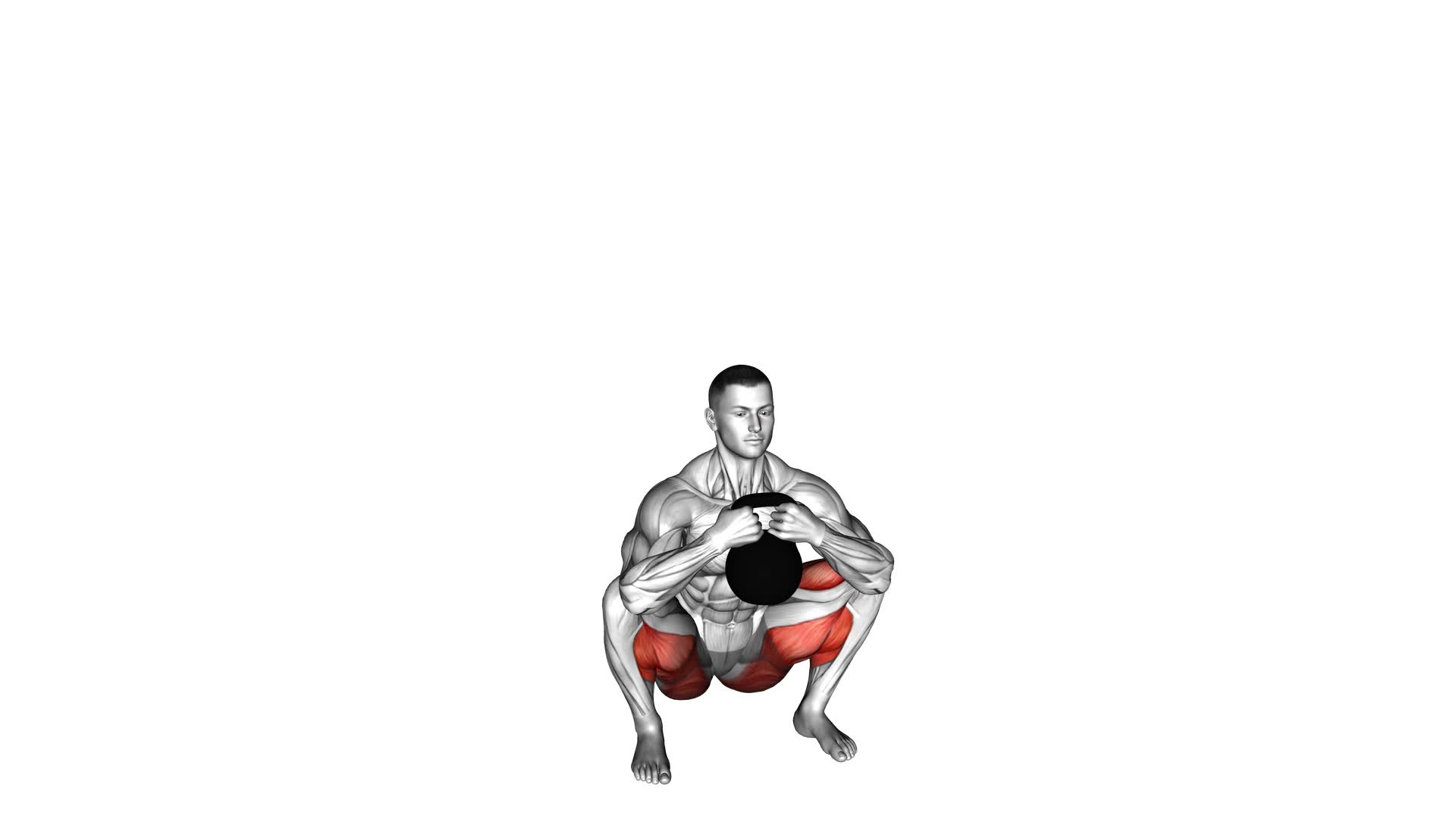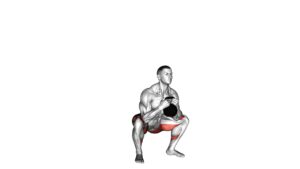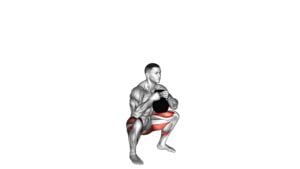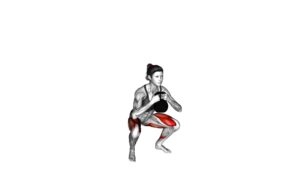Kettlebell Goblet Squat Mobility – Video Exercise Guide & Tips

Are you looking to improve your mobility and strengthen your lower body? Look no further than the Kettlebell Goblet Squat.
Watch This Exercise Video
In this video exercise guide, we'll show you the proper form and technique for this challenging exercise.
With variations to keep you engaged and tips to help you improve your mobility, you'll be on your way to a stronger, more flexible body in no time.
So grab a kettlebell and get ready to squat your way to better mobility.
Key Takeaways
- Incorporate dynamic stretching exercises into your warm-up routine for improved mobility
- Engage your core and keep your chest up for proper form and posture
- Progress gradually by increasing weight and trying variations like single-leg goblet squats and pausing at the bottom of the squat
- Avoid common mistakes such as using excessive weight, rounding the back, leaning too far forward or backward, and not going low enough in the squat
Benefits of the Kettlebell Goblet Squat
You will frequently experience the benefits of the Kettlebell Goblet Squat. This exercise not only strengthens your lower body but also engages your core and improves your overall stability. One of the key advantages of the Kettlebell Goblet Squat is that it targets multiple muscle groups simultaneously, including your quadriceps, glutes, hamstrings, and calves. This makes it an efficient exercise for building strength and muscle tone in your lower body.
Additionally, the Kettlebell Goblet Squat can be modified to suit different fitness levels and abilities. For beginners, using a lighter kettlebell or even just body weight can help develop proper form and technique before progressing to heavier weights. On the other hand, more advanced individuals can increase the weight or perform the exercise on an unstable surface, such as a Bosu ball, to further challenge their balance and stability.
Another benefit of the Kettlebell Goblet Squat is its versatility. It can be incorporated into various workout routines, such as circuit training or HIIT workouts, to add intensity and variety. Furthermore, this exercise can also improve your mobility and flexibility, particularly in the hips and ankles, which can enhance your performance in other activities or sports.
Proper Form and Technique
To perform the Kettlebell Goblet Squat with proper form and technique, focus on maintaining a stable core and an upright posture throughout the movement. This will help you maximize the benefits of the exercise and reduce the risk of injury.
Here are some key points to keep in mind:
- Warm up: Before starting any exercise, it's important to warm up your body. This will increase blood flow to your muscles and prepare them for the workout ahead.
- Start with lighter weights: If you're a beginner, it's recommended to start with lighter kettlebells and gradually increase the weight as you become more comfortable with the movement.
- Engage your core: Throughout the squat, make sure to engage your core muscles by pulling your belly button in towards your spine. This will help stabilize your body and protect your lower back.
- Keep your chest up: Maintain an upright posture throughout the movement by keeping your chest lifted. This will prevent your upper body from leaning forward and placing unnecessary stress on your lower back.
- Go at your own pace: Don't rush through the exercise. Take your time to perform each squat with control and focus on maintaining proper form.
Variations to Challenge Yourself
One way to challenge yourself with the Kettlebell Goblet Squat is by incorporating different variations. By adding variations to your workout routine, you can continue to progress and achieve better results.
One way to do this is by increasing the weight of the kettlebell gradually, which is known as progressive overload. Start with a comfortable weight and gradually increase it as you become stronger and more comfortable with the movement. This will challenge your muscles and help you build strength and endurance.
Another way to challenge yourself is by incorporating advanced modifications. One modification you can try is the single-leg goblet squat. Instead of using both legs, lift one leg off the ground and perform the squat on the other leg. This variation requires more stability and strength from your core and leg muscles.
You can also try adding a pause at the bottom of the squat. Lower yourself down into the squat position and then hold for a few seconds before coming back up. This will increase the time under tension for your muscles and make the exercise more challenging.
Remember to always listen to your body and progress at your own pace. It's important to challenge yourself, but it's equally important to do so safely and effectively.
Tips for Improving Mobility
To improve your mobility, focus on incorporating dynamic stretching exercises into your warm-up routine. These exercises for flexibility and stretches for increased range of motion will help prepare your body for movement and prevent injuries.
Here are five essential exercises to include in your mobility routine:
- Leg swings: Stand next to a wall or support and swing one leg forward and backward, gradually increasing the range of motion.
- Arm circles: Extend your arms out to the sides and make small circles in both directions to warm up your shoulder joints.
- Hip openers: Sit on the ground and bring the soles of your feet together. Gently press down on your knees to stretch your hip muscles.
- Thoracic rotations: Stand with your feet shoulder-width apart and rotate your upper body from side to side, focusing on twisting through your mid-back.
- Lunge with a twist: Step forward into a lunge position and twist your torso towards the front leg, stretching your hip flexors and improving spinal mobility.
By incorporating these exercises into your warm-up routine, you can improve your flexibility and increase your range of motion, allowing you to move more freely and perform exercises with better form.
Now, let's move on to the next section and discuss common mistakes to avoid.
Common Mistakes to Avoid
Avoid these common mistakes when performing kettlebell goblet squats to improve your mobility.
- One common mistake is using excessive weight. It's important to choose a kettlebell that you can handle with proper form. Using too heavy of a weight can compromise your technique and increase the risk of injury.
- Another mistake is rounding your back during the squat. Keep your spine neutral and engage your core to maintain proper alignment.
- Additionally, make sure to avoid leaning too far forward or backward. Find the balance where your weight is distributed evenly on your feet.
- Not going low enough is another mistake to avoid. Aim to squat until your thighs are parallel to the ground or even lower if you can.
- Lastly, rushing through the exercise is a common mistake. Take your time and focus on proper form and control throughout the movement.
Frequently Asked Questions
How Much Weight Should I Start With When Doing the Kettlebell Goblet Squat?
When starting the kettlebell goblet squat, it's important to choose a weight that challenges you but allows for proper form. Begin with a weight that you can comfortably handle for 8-10 repetitions. As you build strength and improve your technique, gradually increase the weight.
Starting with a lighter weight allows you to focus on mastering the movement and reduces the risk of injury. The kettlebell goblet squat is a great exercise for beginners, as it improves lower body strength and mobility.
Can the Kettlebell Goblet Squat Help With Lower Back Pain?
The kettlebell goblet squat can be beneficial for lower back pain. By engaging your core and promoting proper posture, it helps to strengthen the muscles that support your spine.
Additionally, the goblet squat improves hip mobility, which can relieve tension in the lower back. To experience these benefits, make sure to maintain proper form during the exercise. Keep your chest upright, knees tracking over your toes, and hips below parallel.
How Often Should I Incorporate the Kettlebell Goblet Squat Into My Workout Routine?
Incorporating kettlebell goblet squats into your workout routine is important for improving mobility and strength.
To determine how often you should include them, consider your fitness goals and current level of fitness.
Generally, it's recommended to perform kettlebell goblet squats 2-3 times per week, allowing for adequate rest and recovery between sessions.
Start with a lower weight and gradually increase as you become more comfortable and proficient with the exercise.
Is It Necessary to Warm up Before Performing the Kettlebell Goblet Squat?
Before performing the kettlebell goblet squat, it's necessary to warm up properly. By warming up, you can increase blood flow to your muscles, improve joint mobility, and reduce the risk of injury.
A good warm up can include dynamic stretches, such as leg swings and hip circles. If you have limited mobility, there are alternative exercises you can try, such as bodyweight squats or using a resistance band for assistance.
Can the Kettlebell Goblet Squat Be Modified for Individuals With Knee or Hip Issues?
If you have knee or hip issues, there are modified variations of the kettlebell goblet squat that you can try. These variations can help reduce stress on your joints while still providing the benefits of increased mobility and strength.
By adjusting your stance, using a lighter weight, or incorporating a support like a bench, you can make the exercise more accessible and comfortable for your specific needs.
Consult with a fitness professional to find the best modification for you.
Conclusion
In conclusion, the kettlebell goblet squat is a highly effective exercise for improving mobility and strength. By maintaining proper form and technique, you can maximize the benefits and avoid common mistakes.
Additionally, challenging yourself with variations can further enhance your progress. Remember to focus on improving your mobility and listen to your body to prevent any injuries.
Incorporating this exercise into your fitness routine can lead to great results.

Author
Years ago, the spark of my life’s passion ignited in my mind the moment I stepped into the local gym for the first time. The inaugural bead of perspiration, the initial endeavor, the very first surge of endorphins, and a sense of pride that washed over me post-workout marked the beginning of my deep-seated interest in strength sports, fitness, and sports nutrition. This very curiosity blossomed rapidly into a profound fascination, propelling me to earn a Master’s degree in Physical Education from the Academy of Physical Education in Krakow, followed by a Sports Manager diploma from the Jagiellonian University. My journey of growth led me to gain more specialized qualifications, such as being a certified personal trainer with a focus on sports dietetics, a lifeguard, and an instructor for wellness and corrective gymnastics. Theoretical knowledge paired seamlessly with practical experience, reinforcing my belief that the transformation of individuals under my guidance was also a reflection of my personal growth. This belief holds true even today. Each day, I strive to push the boundaries and explore new realms. These realms gently elevate me to greater heights. The unique combination of passion for my field and the continuous quest for growth fuels my drive to break new ground.







